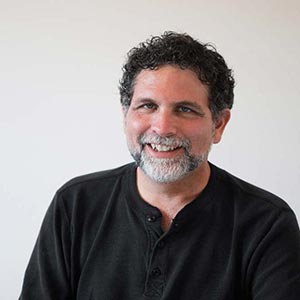To continue this discussion and approach the evolutionary metaphysics of Charles Sanders Peirce, I first want to return to Kant. As I wrote about earlier, Kant’s big insight was that the world as we perceive it is interpreted through certain apriori – before thought – categories of mind. His categories include such obviously fundamental elements as time, space and causation. I have come to think of Kant’s categories as forming what might be called a Kantian Theater – a stage upon which reality as we know it unfolds. If we apply this idea to the evolution of the universe then the process of evolution unfolds in the Kantian Theater of time, space, causality, etc. This was a notion that Peirce challenged.
Peirce, perhaps partly influenced by the strict empiricism of Chauncey Wright, was unwilling to generalize the understanding of the universe that we received from measurement and observation to include aspects of the universe that could not, or had not yet been, measured. To return again to the example of angles in a triangle that I have written about earlier, Peirce did not want to assume that just because the angles of all triangles that had ever been measured added to 180 degrees that the angles of all triangles that could be measured would all add up to 180 degrees. If that were the case then it would hold true even for infinitely large triangles and that would imply that space spread infinitely in all three dimensions so that no matter how large a triangle you measured it would always lie on a flat plan and therefore its angles would always add to 180 degrees.
It didn’t make rational sense to Peirce that the universe would simply spread infinately in all directions. It made much more sense that the universe was bound in some way which meant that space must curve however slightly so that the universe would not go on forever. So Peirce believed that if we could measure a triangle large enough, we would eventually find that its angles would add to either slightly less than or slightly more than 180 degrees depending on whether the curve of space was concave or convex.
Peirce didn’t believe that the universe as we observed it in our tiny location was necessarily the same throughout all of space. Likewise he didn’t believe that the universe as we observed it in our tiny time frame would hold true for all time. In fact, he believed that since the universe was an evolving event, everything about the universe must have evolved, including the Kantian categories of time, space, causality, etc. Peirce didn’t see evolution as a play that occurred in a static Kantian Theatre, he saw a theater that was itself also evolving. In other words he didn’t believe that evolution only happened to things in the universe, he believed that the entire universe was one evolving as whole event.
And so Peirce was compelled to rethink Kant’s categories to figure out what was truly universal about the universe. What he came up with were the modes of being he called Firstness, Secondness and Thirdness that I have also mentioned earlier. Firstness is the essence of things, Secondness is the experience of encountering an essence, and Thirdness is the understanding of relationships that bind essences to experience and create a mental picture of reality. So we can use the words essence, encounter and understanding in place of Firstness, Secondness and Thirdness.
Essence, encounter and understanding are the three unchanging characteristics of the universe and the universe co-evolves and co-unfolds simultaneously in all three modes of being.
Peirce’s view of evolution was Integral in the sense that he saw these aspects of being evolving simultaneously. In a more Kantian sense, which most of us have absorbed deeply, you would tend to view the essence of reality as primary and preexisting. In that way of thinking as we encounter more of reality we see ourselves as experiencing more of what was already there. Similarly we tend to see our experience of reality as preexisting our understanding of reality, so that as we understand more about our experience we tend to see ourselves as understanding more about experiences we have already had (or already could have had) connected to an essential reality that was already there.
Peirce didn’t see it this way. He saw these three aspects of being as co-emerging and co-evolving integrally. That means that as we experience more of reality there is actually more of reality being created. As we understand more about reality there is more experience of reality and hence more of reality itself being simultaneously created. In this way he saw our growing understanding of reality as the growth of reality itself. Our investigation into truth was the growth and evolution of the universe in a very literal sense. This was Peirce’s formulation of conscious evolution.
This is very challenging to conceive of because it is counter to our more conventional notion of a static universe that preexists and that we in turn have an expanding encounter with and a growing understanding of. On the contrary to Peirce everything evolved at the same time so as the essence, encounter and understanding of the universe co-evolved into the universe as we know it, the aspects of time, space, causality and all of our physical laws, also slowly came into being through a process of variation and selection.
